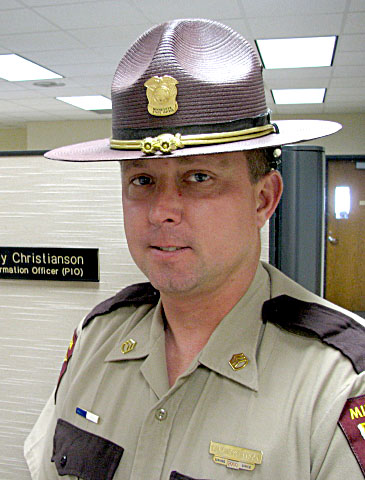
Question: If involved in a minor auto accident with another driver, what steps should be taken at the scene by both parties?
Answer: Crashes happen every day in Minnesota. Crashes are one of the State Patrol’s primary duties. It’s important to know what to do immediately after a crash happens.
The first and most important thing to do after you’ve been involved in a crash is to get to a safe place. Worry less about “preserving the scene” for law enforcement and more about protecting yourself and your car from further damage, especially if you’re on a highway or interstate. This could mean driving (if possible) to the nearest off-ramp or underpass.
If your car isn’t drivable, stay inside the vehicle with your seat belt on, but move to the passenger’s side so there is more room between you and traffic.
As soon as you are safe, call 911. When law enforcement arrives, you should exchange information with the other driver and take pictures of the damage and crash scene, but only when it is safe to do so.
What you will need to know about the other driver:
•Name
•Address
•Phone number
•License plate number
•Driver’s license number
•Insurance company name
•Insurance policy number
Question: In the summertime I notice a lot more tire treads on the roads. Can you write about what to do if you have a tire blow out while driving?
Answer: It is important to monitor proper tire pressure and your tire condition and hopefully you can avoid a tire blow-out. In the warmer months the hot air can cause your tires to increase pressure while the colder months can cause the air in your tires to condense, lowering the tire pressure.
If a tire does blow out, here are a few tips to keep yourself safe and minimize damage.
•Hold onto the steering wheel to maintain control of the vehicle to avoid going into other lanes of traffic or opposing traffic.
•Keep your foot on the gas to maintain control. Once you have regained control, reduce speed. (Your instincts will want you to brake, but this can change the vehicle dynamics quickly which can cause you to lose control.)
•Keep your forward momentum: Keep the vehicle moving in a straight line if possible.
•Allow the vehicle to slow down gradually: Take your foot off the gas and avoid the brakes; let your vehicle slow down naturally. Once your vehicle starts to slow down, it will be easier to control. Activate you hazard lights and move onto the shoulder.
You can avoid a ticket — and a crash — if you simply buckle up, drive at safe speeds, pay attention and always drive sober. Help us drive Minnesota toward zero deaths.
If you have any questions concerning traffic-related laws or issues in Minnesota, send your questions to Sgt. Troy Christianson – Minnesota State Patrol at 2900 48th Street NW, Rochester MN 55901-5848. (Or reach him at, Troy.Christianson@state.mn.us)



